Available 24/7
Available 24/7
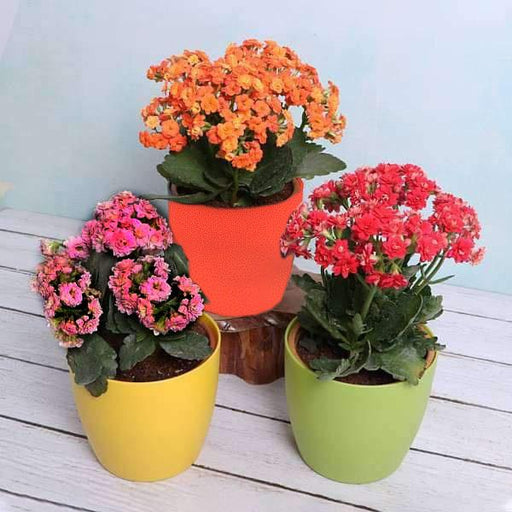
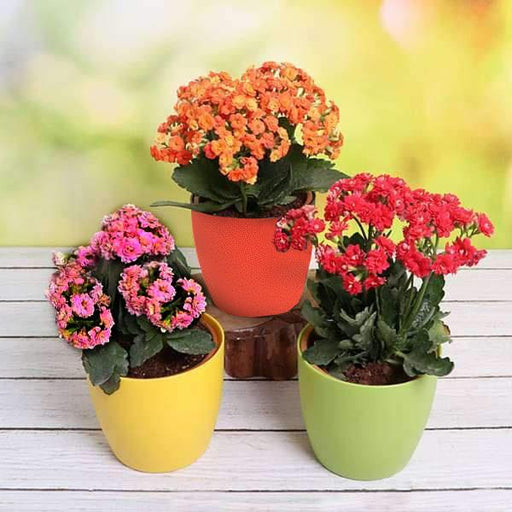 Save 10%
Save 10%
DescriptionThe Kalanchoes are thick leaved elegant flowering succulent houseplants. Make your home garden more vibrant and full of colors by bringi...
View full details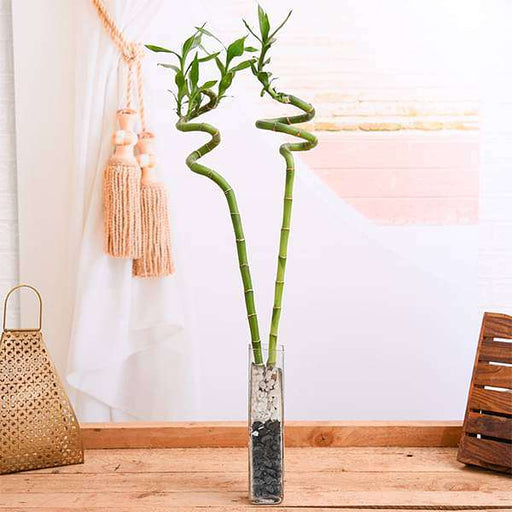 Save 18%
Save 18%
DescriptionThis pack contains two 60 cm Spiral Stick Lucky Bamboo Plant + Glass vase + 250g white chip pebbels + 250g black chip pebbels.About Luc...
View full details

DescriptionIf the juvenile foliage along with a more compact plant is preferred, cut off all the climbing stems that develop, this will keep it bus...
View full details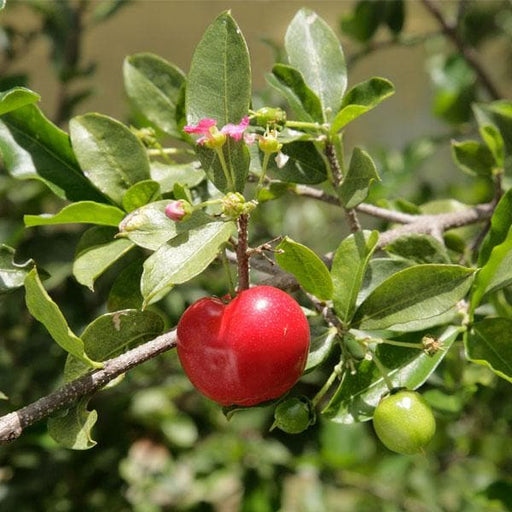 Save 15%
Save 15%
DescriptionGrowing Barbados Cherry is an easy way to add a tropical flair to your garden. When you know its important and how to care for Barbados ...
View full details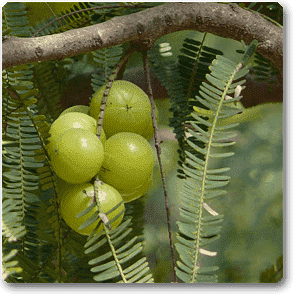 Save 17%
Save 17%
DescriptionImprove immunity of your all family member by growing a nutritious and vitamin rich an amazing Amla plant. Amla is a small to the medium...
View full details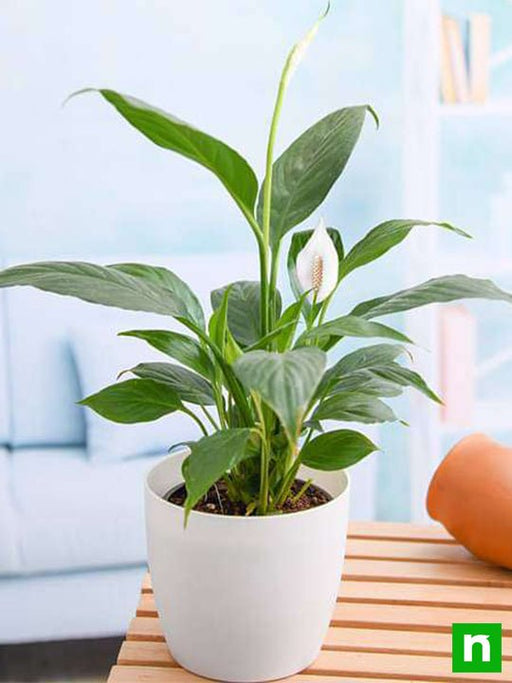
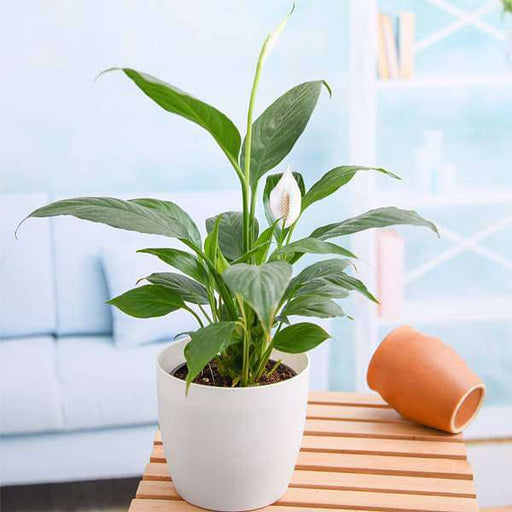 Save up to 15%
Save up to 15%
DescriptionPeace Lily Plant is a very popular and very rare indoor flowering houseplant. It is also an excellent air purifier plant.What makes it s...
View full details
 Save 20%
Save 20%
DescriptionFlowers make intimate connections they increase our connectivity with family and friends. Mogra plant is famously known as Jasmine flowe...
View full details
 Save 10%
Save 10%
DescriptionThe Kalanchoes are thick leaved elegant flowering succulent houseplants. Make your home garden more vibrant and full of colors by bringi...
View full details Save 45%
Save 45%
Description Pack of 4 succulents that are very easy to care for. A perfect pack to start growing plants worry-free. About You get 4 succulent plant...
View full details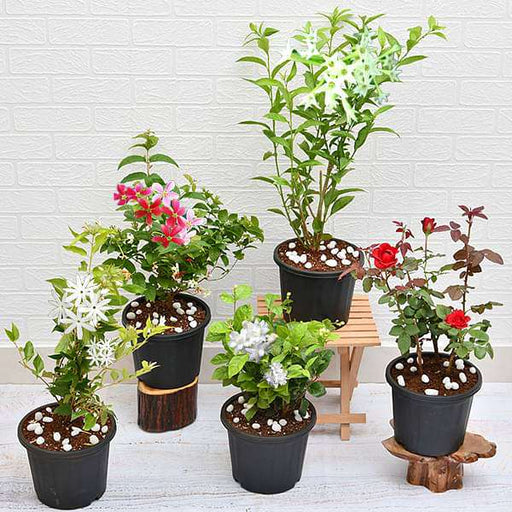 Save 12%
Save 12%
DescriptionAromatic plants bring into a room or house an often overlooked benefit. These plants have a pleasant scent.About You plant a hope when ...
View full details
 Save up to 50%
Save up to 50%
DescriptionIf you long for indoor greenery but have not succeeded with houseplants, consider these beautiful succulents. A perfect pack to start gr...
View full details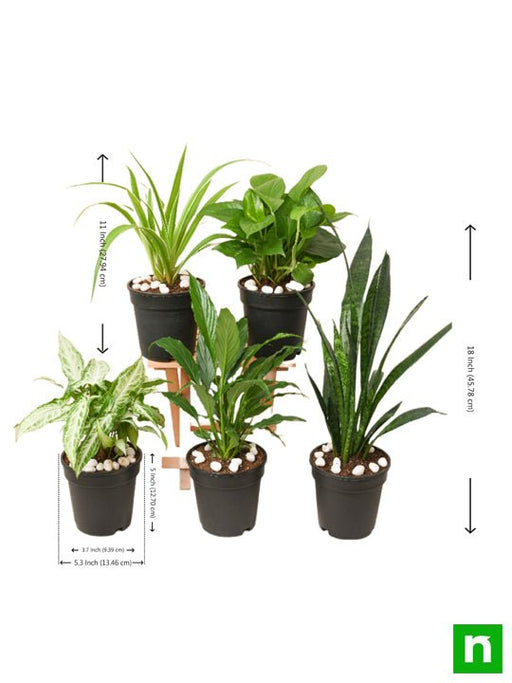
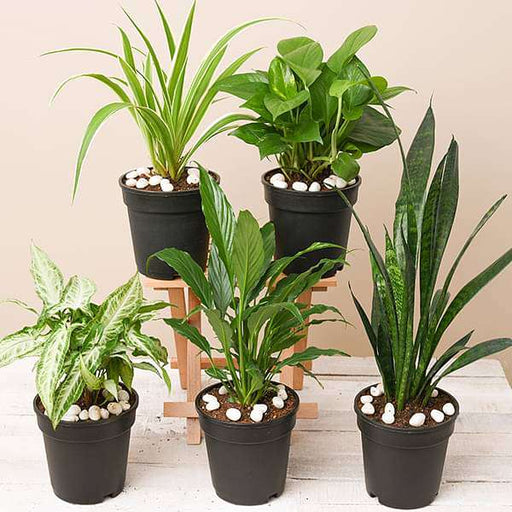 Save 21%
Save 21%
DescriptionThis plants pack contains amazing 5 houseplants + 5 Pots. Surround your home with these best pollution killer plants for a clean and hea...
View full details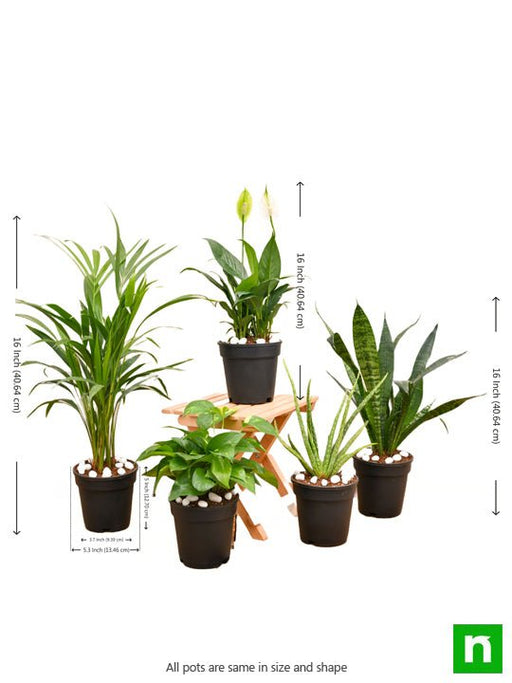
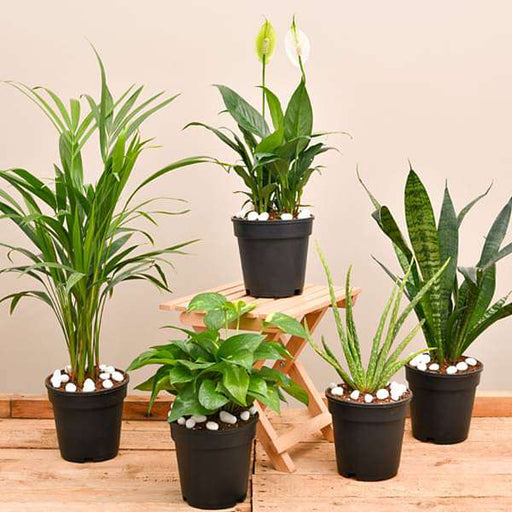 Save 20%
Save 20%
DescriptionIf you or anyone from your family wants to breathe fresh air, cleaner air in their homes, this 5 plants pack purify the air around and r...
View full details
 Save 40%
Save 40%
DescriptionSet of 2 Bonsai Looking Grafted Adenium PlantsAbout You get 2 Bonsai looking hardy grafted Adenium plants in a single pack.Plants are k...
View full detailsOne of the most-liked colours in the world, nature has bountiful shades of blue in its scenery, such as the outspread sky and the vast, deep oceans. Blue is also symbolic of happiness and tranquillity that we need more than ever in our lives. That’s why adding blue flower plants in your home not only adds to its beauty, but also keeps everyone in the home happy.
Blue flower plants come in a wide variety of blue shades ranging from royal blue to sky blue and greenish blue to purple-blue. But irrespective of the level of blueness, each of these plants is magnificent to look at. Blue flower plants like African lily, Russian Sage, and Lavender Angustifolia are very popular and an excellent choice if you wish to purchase blue flower plants.
Benefits of Blue Flower Plants
All blue flower plants are relatively easy to grow irrespective of the weather conditions, and they bloom multiple times in a year. The plants can be grown as a group in the garden or as a single plant in a pot.
All blue flower plants can be given on special occasions like the wedding day, birthday, and Valentine’s day to make it an exceptional day for your partner. After all, its colour can mesmerize your partner, and its aroma can give them joy and help them relive all their happy moments with you.
Some blue flower plants like butterfly pea flower have also been used as an herbal ingredient in tea. It is also a popular ingredient in cooking in most of the southeast Asian countries. They add this flower to make their food healthy and aromatic.
Why Choose NurseryLive?
Blue-coloured plants are a rare gift of nature, and NurseryLive helps deliver this gift to your loved ones through its wide collection of blue flower plants. These plants need not be grown in your lawn or your garden and can very well fit in your indoors. In fact, having these flowers placed on top of your centre table gives an artistic touch to your living room.
All blue flower plants from NurseryLive are carefully packed to hold the plants in place and allow them to breathe during the transit. You also get detailed instructions on gardening techniques for each plant you purchase along with real-time guidance from experts through Whatsapp.
Use tools like Google Keyword Planner, Ahrefs, SEMrush, or Ubersuggest to find relevant keywords and their search volume.
Think about what people might search for when looking for "Blue Flower Plants." Consider synonyms, related terms, and variations.
See what keywords your competitors are targeting, and if they are successful, incorporate similar terms into your strategy.
"
Orchids are one of the most beautiful flowers in the world, and blue orchids are particularly stunning. Blue orchids are rare and exotic, making them a popular choice for gardeners and florists alike. Blue orchids are available in a variety of shades, ranging from light blue to deep navy.
One of the most popular types of blue orchids is the Blue Mystique orchid. This orchid is known for its vibrant blue color, which is achieved through a special dyeing process. The Blue Mystique orchid is not only beautiful but also easy to care for, making it a great addition to any home or garden.
To care for your blue orchid plant, make sure to place it in a well-lit area, but avoid direct sunlight. Water your orchid regularly, but make sure not to overwater it, as this can cause the roots to rot. Orchids also require a specific type of fertilizer, so make sure to use a fertilizer specifically designed for orchids.
In conclusion, blue orchid plants are a beautiful and exotic addition to any home or garden. With proper care, your blue orchid plant will thrive and provide you with stunning blooms for years to come.
Hydrangeas are a popular choice for gardeners due to their large, showy flowers and ease of care. Blue hydrangeas, in particular, are a stunning addition to any garden or landscape. They are known for their large, rounded blooms that range in shades of blue, from pale sky blue to deep indigo.
To care for your blue hydrangea plants, make sure to plant them in a spot that receives partial shade. Hydrangeas require moist, well-draining soil, so make sure to water them regularly. You can also add a layer of mulch around the base of the plant to help retain moisture. To encourage your hydrangea to bloom blue, add aluminum sulfate to the soil, which will lower the pH level.
Bluebells are a beautiful and delicate wildflower that grows in wooded areas and meadows. They are known for their vivid blue color and sweet fragrance, which attracts bees and other pollinators. Bluebells bloom in the spring and are a popular choice for gardens and landscapes due to their beauty and ease of care.
To grow bluebell plants, plant them in a spot that receives partial shade, such as under trees or in a woodland garden. Bluebells prefer moist, well-draining soil, so make sure to water them regularly. Bluebells also spread quickly, so make sure to give them plenty of space to grow.
Blue sage, also known as Salvia azurea, is a stunning plant that is native to North America. It is known for its tall, spiky blooms that range in shades of blue, from pale sky blue to deep violet-blue. Blue sage is a popular choice for gardens and landscapes due to its striking appearance and ability to attract bees and other pollinators.
To care for your blue sage plants, make sure to plant them in a spot that receives full sun. Blue sage prefers well-draining soil, so make sure to water it regularly. Blue sage also requires very little maintenance, making it a great choice for beginner gardeners.
Blue lupines are a beautiful and easy-to-grow plant that is native to North America. They are known for their tall spikes of blue flowers, which bloom in late spring and early summer. Blue lupines are a popular choice for wildflower gardens and meadows due to their striking appearance and ability to attract bees and other pollinators.
To grow blue lupine plants, plant them in a spot that receives full sun. Lupines prefer well-draining soil, so make sure to water them regularly. Lupines also require very little maintenance, making them a great choice for beginner gardeners.
Irises are a popular choice for gardeners due to their beautiful blooms and ease of care. Blue irises, in particular, are a stunning addition to any garden or landscape. They are known for their large, showy blooms that range in shades of blue, from pale sky blue to deep indigo.
To care for your blue iris plants, make sure to plant them in a spot that receives full sun. Irises prefer well-draining soil, so make sure to water them regularly. Irises also require very little maintenance, making them a great choice for beginner gardeners.
Blue poppies, also known as Meconopsis, are a stunning and rare plant that is native to the Himalayas. They are known for their vibrant blue blooms, which are often described as a true blue or sky blue. Blue poppies are a popular choice for collectors and enthusiasts due to their beauty and rarity.
To grow blue poppy plants, plant them in a spot that receives partial shade and has moist, well-draining soil.
Ans: Some popular blue flower plants that can be grown in India include Blue Salvia, Blue Hydrangea, Blue Lupine, Blue Iris, Bluebell, Blue Poppy, Blue Delphinium, Bluebell Vine, and Blue Glory Vine.
Ans: Blue flower plants in India require well-drained soil and regular watering. Most blue flower plants prefer partial shade, but some, like blue salvia and blue iris, prefer full sun. Fertilize your blue flower plants every two weeks during the growing season to encourage healthy growth and vibrant blooms.
Ans: Blue flower plants in India prefer well-drained soil that is rich in organic matter. Make sure the soil is loose and airy to allow for good drainage and root growth.
Ans: Yes, blue flower plants can be grown in pots in India. Make sure to choose a pot that is large enough to accommodate the plant's root system and use well-draining soil. Place the pot in a spot that receives the appropriate amount of sunlight and water the plant regularly.
Ans: The best time to plant blue flower plants in India is in the early spring, just after the last frost. This allows the plants to establish their roots before the hot summer months.
Ans: Blue flower plants in India can be propagated by division, cuttings, or seeds. Division is the easiest method and should be done in the early spring. Cuttings should be taken in the summer and rooted in a pot with well-draining soil. Seeds should be sown in the fall and kept moist until they germinate.
Ans: Blue flower plants in India should be watered regularly, about once a week, or more frequently during hot, dry weather. Make sure not to overwater the plants, as this can lead to root rot.
Ans: Pruning blue flower plants in India should be done in the early spring before new growth appears. Remove any dead or damaged branches and cut back any overgrown stems to encourage new growth.
Ans: To protect your blue flower plants from pests and diseases in India, make sure to keep the plants healthy by providing them with the appropriate amount of water, sunlight, and nutrients. Use organic pesticides and fungicides if necessary and remove any infected or damaged plant material immediately.
Ans: Some blue flower plants can be grown indoors in India, such as blue hydrangea and bluebell vine. Make sure to place the plant in a spot that receives bright, indirect light and water the plant regularly.
Ans: Fertilize your blue flower plants in India every two weeks during the growing season with a balanced fertilizer. Follow the instructions on the fertilizer package for the appropriate amount and method of application.
Ans: Yes, many blue flower plants can be grown in the shade in India, such as bluebell and blue poppy. Make sure to choose a spot that receives partial shade and has well-draining soil.
Ans: Prepare the soil for planting blue flower plants in India by removing any weeds or debris and loosening the soil to a depth of about 6-8 inches. Mix in some organic matter like compost or manure to improve soil fertility and drainage.
Ans: When choosing blue flower plants for your garden in India, consider the amount of sunlight and space available, as well as your climate and soil type. Choose plants that are well-suited for your specific growing conditions.
Ans: Blue flower plants in India can be overwintered by cutting back the stems in the fall and covering the plants with a layer of mulch or straw. This helps protect the plants from frost damage during the winter months.
Ans: The bloom time for blue flower plants in India varies depending on the specific plant and growing conditions. Some plants, like blue salvia and bluebell vine, may bloom continuously throughout the growing season, while others may only bloom for a few weeks.
Ans: Deadheading blue flower plants in India involves removing spent blooms to encourage the plant to produce more flowers. Simply pinch off the dead blooms at the base of the stem using your fingers or a pair of pruners.
Ans: Store blue flower seeds in India in a cool, dry place like a sealed plastic bag or airtight container. Make sure to label the container with the plant name and date of harvest.
Ans: Transplant blue flower plants in India in the early spring or fall when the weather is mild. Dig a hole that is slightly larger than the root ball of the plant and gently place the plant in the hole. Fill in the soil around the plant and water thoroughly.
Ans: To create a blue flower garden in India, choose a variety of blue flower plants that are well-suited for your growing conditions. Arrange the plants in groups according to their height and blooming time to create a visually appealing garden. Incorporate other colors and textures to complement the blue flowers and add interest to the garden.